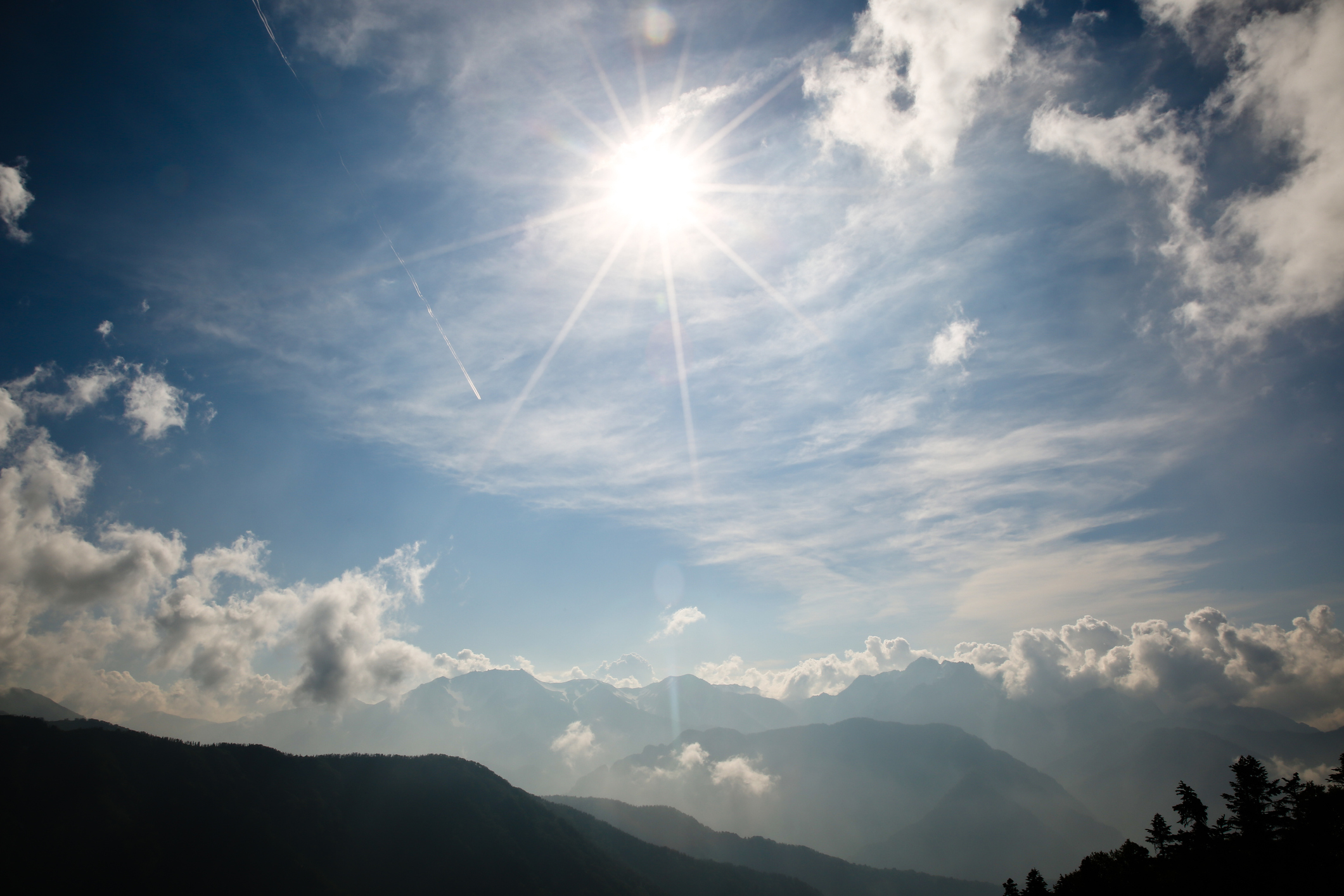This story was originally published by Undark and is reproduced here as part of the Climate Desk collaboration.
In mid-December, more than 28,000 people met in Washington, D.C., to discuss everything earth science-related at the American Geophysical Union Fall Meeting. But amid the dry data and scientific acronyms at a session on solar geoengineering, the science had a patina of existentialist dread that you might not see in a similar forum. There were questions of public disclosure, talk of slippery slopes, and an inescapable nervousness, as if maybe this subject was only barely sitting on the respectable side of science.
It isn’t hard to understand why. Geoengineering refers to a controversial set of proposals centered around one basic idea: to use technology to help cool down a rapidly warming planet. The most prominent scheme is solar radiation management (SRM), whereby sunlight is reflected back into space to reduce global warming. Such a feat may be attempted through a variety of techniques including stratospheric aerosol injection, which acts much like a volcano does naturally by dumping tons of tiny sulfur particles 60,000 feet in the sky.
This is not, generally speaking, a popular idea. “SRM is only being considered because the world is broken,” says Simon Nicholson, director of American University’s Global Environmental Politics Program, who works on the politics and governance of geoengineering. The approach is a measure of last resort, a stopgap that might stave off some of the worst effects of warming in the face of plodding progress toward reducing carbon emissions. SRM also has plenty of potential downsides — such as regional changes to weather patterns and related effects on crop yields — and it would do nothing to address climate-adjacent issues like ocean acidification.
Though it remains divisive, solar geoengineering has started to gain traction both in climate science and with the broader public, thanks to the increasing direness of climate change. Still, most geoengineering researchers agree that reducing carbon dioxide emissions is by far the highest priority. If humanity somehow managed to switch off the CO2 spigot tomorrow, though, geoengineers’ field could disappear. The point of geoengineering today is to slow down climate change, and if we could do that through less controversial means, there might not be a need to study the concept at all.
So the geoengineers find themselves in the somewhat odd position of working in a field that they wish did not exist. What is that like?
Across the field, the reactions to this existential crisis are mixed. “SRM is peculiar, in the sense that most of those who study it do so with some amount of reluctance or ambivalence,” Nicholson says. Researchers studying geoengineering generally acknowledge the subject matter is “unpalatable,” he adds, which leads to an uncommon degree of self-reflection and caution.
This cautious approach is partially informed by sharp criticism from those who think that even studying SRM gives tacit permission to ignore the imperative of emissions reductions; there are plenty of angry responses from the public, as well as from climate scientists and those in other fields. But many geoengineering experts think this criticism is short-sighted. “Wishing it weren’t so won’t make it go away,” says Joshua Horton, a research director of geoengineering at Harvard University. “The world is full of things we wish didn’t exist but ignore at our peril. Climate change is one of those things, and so is solar geoengineering — ignoring the former will lead to catastrophe, but ignoring the latter is also likely to lead to unnecessary pain and suffering.”
While some scientists may still wish geoengineering was a fringe idea, there is no doubt that it is heading toward the mainstream. The United Nations Intergovernmental Panel on Climate Change (IPCC), which assesses and synthesizes the scientific research on climate change, as well as potential impacts and mitigation strategies, has increasingly included discussion of geoengineering in its publications. The IPCC’s most recent special climate report featured big chunks of a chapter on the topic, though it explicitly refrained from using the term geoengineering itself and separated SRM from carbon dioxide removal, which is much less controversial. One of the conveners of the AGU session, David Keith, a professor of applied physics and public policy at Harvard and among field’s most prominent academics, missed the D.C. meeting because he was in Poland, where he participated in a panel session on geoengineering at the United Nations climate meeting.
Some geoengineers have noticed the shift in perspective in their daily work. “The first time I ever mentioned that I was going to work on geoengineering, it was basically the end of my talk and I got yelled off the stage,” says Douglas MacMartin, an engineer and climate scientist at Cornell University. Today, he adds, no one he interacts with — other scientists or the general public — says the research is a bad idea.
Still others think of their work in terms of risk management. “If you know there’s some chance of catastrophic risk, then you need to know if you have options or not,” says Holly Buck, a postdoctoral fellow at UCLA who works on the socio-political side of geoengineering. Buck thinks the anger over the need for the field is “a completely appropriate response,” but geoengineering researchers are not the right target. “People should be livid that elites and governments are presiding over a slow-motion apocalypse,” she says, “and have let global warming get to a point where some careful geoengineering research is warranted.”
MacMartin agrees, and compares geoengineering to putting an airbag in a car. “Yes we should take the foot off the gas, yes we should put the foot on the brakes,” he says, “but if you’re going to have an accident, we’d really actually like to reduce the impacts. We’d like to understand whether that’s possible.”
Despite some claims to the contrary, there have so far been almost no physical geoengineering experiments — it’s essentially all computer modeling. At the AGU meeting, though, one of the themes was exactly where to go next. Some experts, such as Ken Caldeira, a climate scientist at the Carnegie Institution for Science in California, think the modeling has more or less run its course; others, including MacMartin, think there is plenty more that the computers have to offer, and that “we don’t know what experiments we need to do.” (One small but prominent outdoor experiment, dubbed SCoPEx, is planned, though it awaits the establishment of an external advisory board before it receives full approval.)
There was a hint of defensiveness in the room as well, a sense that they’re only studying this because the world has forced it upon them. Presenters mentioned the dramatic effects of unchecked climate change, and how the uncertain negative effects of SRM likely pale in comparison to the alternative.
But mostly, these scientists appear to like going to work every day, even though their chosen field is, to put it gently, a bit noisy. Nicholson calls the field “complex and intellectually enlivening,” and MacMartin enjoys the interdisciplinary nature of the work — you can’t separate the science from the sociopolitical angles, and that makes for a stimulating environment.
That’s not to say that there aren’t still discouragements along the way. Some research has suggested that actually explaining SRM to the public causes support for it to drop, so it remains an open question whether the brighter spotlight on the field will improve its reputation. Jadwiga Richter, a geoengineering scientist at the National Center for Atmospheric Research in Colorado, says while most of her colleagues support her research, she still sometimes gets a sense of disapproval from other scientists. “There are definitely people who, you walk down a hall, and they’re shaking their head,” she says. They feel that “this is not what you should be doing.”



